New Dota 2 Challengers League could give aspiring pros a path to the big leagues
It's hard to break into Dota without a sponsorship that pays for practice time. A new league hopes to give more players a shot.
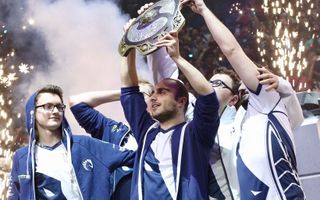
Earlier this month, pro Dota 2 player Peter “PPD” Dager announced a surprising new venture: he’s forming a Dota league. Dubbed North American Dota Challengers League, the organization shifts the focus away from the upcoming International Dota 2 Championships, if only for a moment. And while third-party leagues already exist in the Dota scene, the NADCL hones in on an aspect that most others don’t.
The NADCL is a semi-professional league for North American players. It’s been created by Dager, his family, and fellow players who aim to showcase up-and-coming unsponsored players and teams. This type of semi-pro league is filling a huge hole in the current Dota landscape. Nothing like it exists in North America, aside from community efforts for amateur players. Why, when creating a path to the pros seems like an important piece of a healthy esports scene? The answer lies in the format of the Dota Pro Circuit.
With the NADCL’s creation, Dager aims to provide the stage and financial stability to let rising players pursue professional Dota careers.
The Dota Pro Circuit (DPC) is the main, Valve-sponsored professional league for Dota 2. It consists of Major and Minor Championships, each of which are classified by their prize pool size. As of 2017, these pools also define the number of “Pro Circuit points” teams earn for their final tournament placements. Points determine overall team standings throughout the season, with the top 8 teams immediately qualifying for the International.
Points and prize money alike are heavily skewed towards winners. This makes sense—those who win should be rewarded. But this also removes the focus on smaller teams, creating a sort of survivorship bias. Big-name teams have their practice time subsidized by their sponsors. This gives them an edge over smaller, unsponsored teams, who can’t afford to drop their day job and practice Dota. They’ll likely place lower, meaning less prize money and a slimmer shot at the International. Thus, the easiest way to highlight young, new talent is to hold an event that’s not connected to Valve’s circuit.
That’s exactly why Dager is starting the NADCL. It’s clear he knows the game well: he’s the current captain of OpTic Gaming’s Dota 2 team, and has just qualified for The International himself. He was also the captain for Evil Geniuses when they won the International in 2015, and was later their CEO for about a year. He often pokes fun at the DPC’s current format, so he clearly has thoughts on what a tournament should look like. With the swift announcement of the NADCL and the subsequent Reddit discussion, he’s created his chance to show off that knowledge.
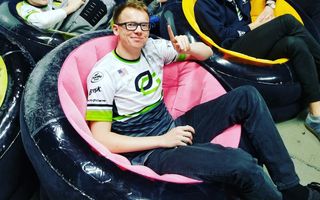
How the Challengers League will work
Currently, the Challengers League is set to include an open number of qualifying rounds filled with aspiring semi-pro teams. These will be whittled down to eight teams who will compete in a group stage opening round. Afterward, the top four will commence in a best-of-three, single-elimination tourney.
“I’m hoping we will create and sustain a healthy league for Dota players, which will give them opportunities to progress towards a professional Dota career,” Dager says. “The tournament’s planning has just begun, but [when it comes to structure and format] I have spoken to all of the professional North American Dota teams, as well as many aspiring Dota professionals in both the NA and EU regions.”
The biggest gaming news, reviews and hardware deals
Keep up to date with the most important stories and the best deals, as picked by the PC Gamer team.
With the NADCL’s creation, Dager aims to provide the stage and financial stability to let rising players pursue professional Dota careers. The hope is that players can afford to practice more and find potential sponsors, helping them graduate to the pro circuit later on.
It helps that the NADCL’s rewards won’t be as starkly divided between winners as losers as they are in the pros. “The NADCL will have a flatter prize pool structure [than the DPC],” Dager explains. “[The flattened pool] will encourage participation, [while still rewarding] players for winning each and every game to incentivize an ethical competition.”
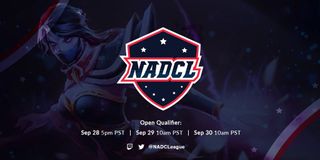
Some third-party professional Dota tournaments exist separate from the DPC, almost as side event scrimmages with prize pools. It makes sense that if Valve won’t create a semi-professional league, those same third-parties could branch into this territory. In fact, semi-pro organizations like the NADCL have already cropped up in other regional scenes. China currently runs the Dota 2 Professional League, while the EU has endeavors like the ProDota Cup.
“The DPL that runs in China was a huge inspiration for this project,” Dager says. “I saw the success teams were having there and thought, ‘Why is that just not a thing here?’ We will be starting with far less teams, but I think they had a nice format, and will emulate it to some degree.”
How Overwatch and LoL do it
The truth is that being sponsored helps enable [Dota teams] to win. They cannot do it on their own.
Peter Dager
The DPC and its disconnected relationship with third-party leagues may sound foreign to fans of other esports. League of Legends and Overwatch, for example, have semi-pro leagues founded by their developers, and both tie naturally into their respective circuits. League’s main professional venue is the League Championship Series, while its semi-pro circuit is the League of Legends Challenger Series.
At the start of each season, a tournament is held where the top 3 teams from last season’s Challenger Series face off against bottom 3 teams in the Championship Series. The losers of these matches go to the Challengers Series, no matter how they entered into the tourney. Winners go to the Championship Series bracket. By switching the highest Challenger teams with the lowest Championship teams, this acts as a path for hopeful League players to transition into professional play. Here, success can guarantee advancement.
Meanwhile, Overwatch has Open Divisions—an entry-level professional climate available to all Overwatch players ranked Master or higher in regular competitive play. From there, players can join a team and compete in the semi-professional Overwatch Contenders program.
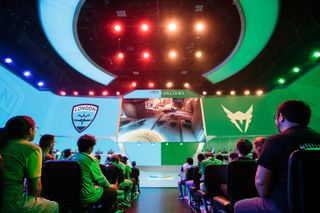
Contenders don’t switch spots with current teams, like those in League’s Challenger Series. Instead, the program is meant to get players before eyes of established franchises. It’s a way to entice pro teams to pick up rising stars.
Dager's Dota Challengers League takes Overwatch’s approach to up-and-coming talent: put them in front of sponsors, and let them strut their stuff. But Overwatch’s teams are pre-existing, franchised entities based in cities, similar to a traditional sports team. This means that the teams themselves pay to compete in Overwatch’s pro scene, as a sort of closed circuit controlled by Blizzard. Even League of Legends is experimenting with team franchising. Teams in the DPC are owned and sponsored, but they’re not franchised. They don’t pay large sums into a closed circuit to help fund DPC tournaments.
Searching for sponsorship
Valve sponsors its own matches, using third-party tournament organizers to produce the event. Teams can be either directly invited by the organizer, or they can play qualifying rounds to place into the event. This open atmosphere reaches into The International, whose prize pool is community-funded, while its roster is also determined through invitations and qualifying rounds. In theory, any team can win the International. They don’t need a franchise to pay their way in.
But teams do seek sponsors, in hopes that their practice time will be paid for. With enough experience, they can gain event invites or qualifier wins. “I’m not sure any unsponsored team has ever won a Major or Minor, let alone [the International],” Dager said. “The truth is that being sponsored helps enable them to win. They cannot do it on their own.”
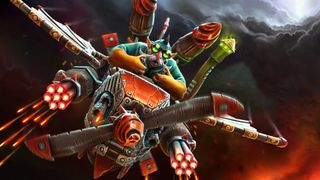
Unless Valve makes some major changes to the DPC, these semi-pro leagues will continue to shine spotlights on teams from afar, letting them practice and find sponsors. The NADCL may not be a first for esports, or even a first for the Dota scene, but it’s a first for aspiring Dota players in North America, and a step towards solidarity across the globe.
“We are hoping that we can set a benchmark for others to become more involved in their sport to make it successful,” Dager explains. “Dota, on one hand, is completely funded by the generosity of the community, which is very unusual. It delivers the world’s richest esports prize pool. [That] is a unique connection in sports, and the professional scene is the Dota showcase for the rest of the world. I think that needs to continue, and I think we as a community have to step up to the plate. NADCL hopes to be a part of [that future.]”
Stay on the lookout for the North American Dota Challengers League in October, after the first Minor Championship of the DPC 2018-2019 season.
Most Popular

